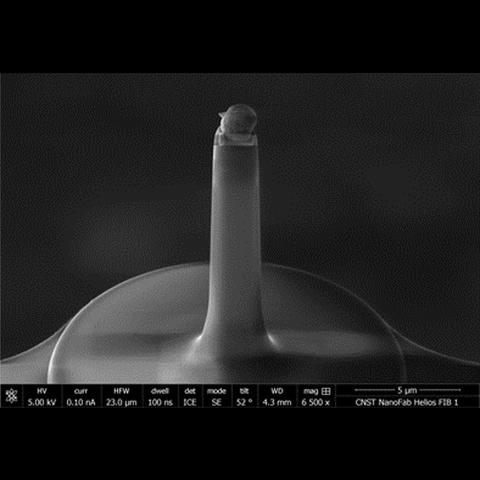Ceramic Additive Manufacturing

Development and commercialization of additive manufacturing (AM) have been a national priority since the 2012 White House We Cannot Wait initiative. The importance of AM to the resiliency of the national supply chain has been highlighted by decision makers in the AM Forward program. AM is a disruptive technology with potential applications in nearly all industrial sectors. The last decade has seen significant advances in metal and polymer AM, whereas the development of ceramic AM lags because of the unique challenges in material forming, shaping and post-processing. Despite these challenges, ceramic AM is actively explored for fabricating components in the aerospace, defense, energy, and health applications, and has already been employed in tooling for investment casting of engine parts. Our motivation and goals are to facilitate the industrialization of ceramic AM by addressing barriers to adopting these technologies. We are leveraging our expertise in measurements and simulations of material processes to develop rigorous metrology-based solutions for characterizing difficult-to-measure rheological properties of ceramic feedstock for direct-ink writing (DIW) and to implement in-situ/operando characterization of ceramics evolution during AM build and post-processing using synchrotron-based high-energy X-ray scattering and tomography. Concurrently, we are working with the ceramics AM community and ASTM/ISO committees to coordinate and organize standards activities in ceramic AM, including interlaboratory studies.
Capabilities
- Ceramic 3D printing, Materials Processing/Synthesis — A custom-built DIW printer designed for dispensing highly loaded ceramic slurries using pressure or auger-driven extrusion that is fitted with optical sensors to monitor changes in the material during the build process. Facilities to synthesize ceramic particles using wet chemical processes and conventional ceramic processing (batching, mixing, milling, sintering).
- Rheology/Printability — A wide range of rheological equipment, from standard rotational plate to custom-built capillary setups. Digital image-correlation capability utilizing our custom 3D printer to extract rheological characteristics and link them to printability.
- In-situ/operando characterizations of processes and synthesis — Synchrotron-based small- and wide-angle X-ray scattering capabilities for in situ/operando monitoring material's structural and microstructural evolution during processing across multiple length scales developed as a part of a long-term partnership with the Advanced Photon Source at Argonne National Laboratory.
Projects
- DIW of Ceramics — One factor limiting the development of ceramic AM is the scarcity of validated modeling for describing the evolution of a ceramic through an AM process to the final part. In 2019, we organized a NIST Workshop on Materials Research and Measurement Needs in Ceramic AM. The consensus was that the successful demonstration of modeling, even for a single mainstream AM process, could catalyze broader developments of simulations for ceramics AM. We set out to address this challenge using ceramic DIW as an example technology. Developing models requires difficult-to-obtain input parameters (e.g., interparticle forces, shear modulus, and yield stress in the highly loaded ceramic feedstock) and validation data, necessitating a concurrent development of relevant metrologies. Therefore, we have been developing rheology and interparticle force measurements and a DIW testbed fitted with in situ monitoring for extracting the feedstock characteristics and the behavior of the resulting material during printing. Further, we characterize the macro- and micro-structural evolution of ceramics during processing using synchrotron-based X-ray scattering and imaging. On the process simulation side, we have focused on developing approaches that combine discrete-element and continuum modeling of ceramic feedstock and its evolution during printing.
- NIST/ASTM Ceramic AM Interlaboratory Study — Following the recommendations of the NIST-organized panel on DIW of ceramics and subsequent discussions with the ASTM/ISO working groups in ceramics AM, we have conducted, and are now in the process of reporting out, the first interlaboratory study (ILS) comparing the mechanical strength of ceramic parts printed using the same type of commercial AM equipment. This ILS, conducted in partnership with ASTM, is a step toward building trust in ceramic AM methods while helping to identify needs and directions for future standards development. It involves laboratories representing academia, national labs, and multinational corporations, with some of the post-processing and all the mechanical testing performed by NIST, leveraging our traditionally strong expertise in the measurements of mechanical properties of ceramics. We anticipate this study will be reported out by mid-2023.
- Cold-Sintering of Ceramics — Successful adoption of ceramic AM technologies is critically dependent on the availability of effective post-processing methods, as nearly all AM processes yield highly porous ceramic parts that require subsequent densification to be useful in applications. We dedicate a part of our efforts to studies of advanced ceramic sintering technologies showing promise for AM-built parts. One such technology is a recently developed ceramic Cold Sintering Process (CSP), which enables the densification of ceramics at temperatures of 100 °C instead of >1000 °C for conventional methods. However, the exact mechanisms of CSP remain uncertain, which hinders its development for commercial use. We designed and implemented a custom test stage for studying the evolution of the ceramic powder densification in situ during CSP using synchrotron high-energy X-ray scattering. The results of these measurements conducted on selected systems provided new insights into the processes that occur at particle surfaces and facilitate the densification at low temperatures, suggesting paths for further optimization of CSP. We intend to use the design concepts used in the CSP test stage to develop setups for in situ X-ray and neutron studies of 3D ceramic printing.

